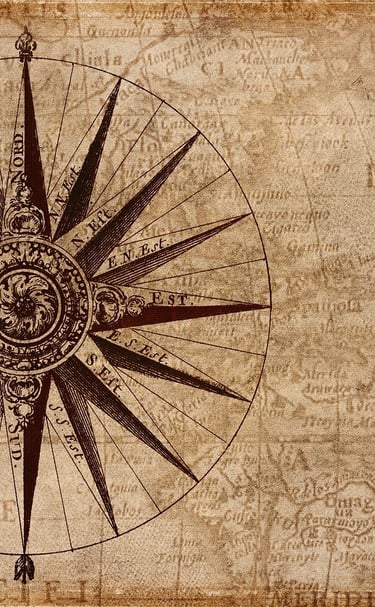Your life is now.
Science, Technology, Curiosities and Behavior.
HUMANAUTAS



VIDEOTECA
HUMANAUTAS

Documentaries: Dive into real stories and meet characters who marked history. Lectures: Listen to renowned experts share their knowledge and insights.
Virtual trips: Explore incredible places without leaving home.

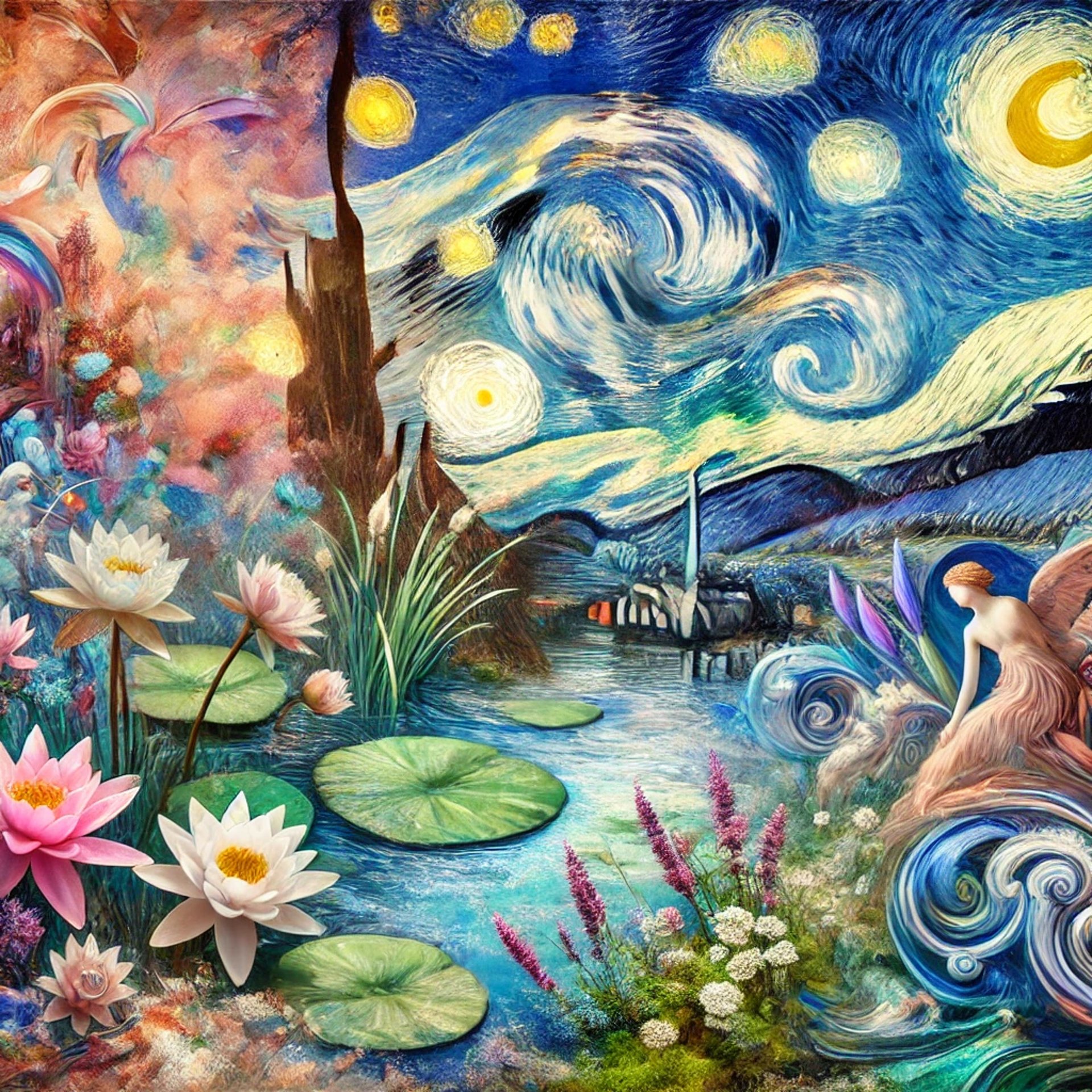
Painting History

Painting, one of the oldest forms of human expression, has been a constant companion on our journey through history. From the rudimentary cave paintings that adorned prehistoric caves to the intricate masterpieces that grace modern museums, painting has served as a mirror into the human soul, reflecting our beliefs, values, fears and aspirations.
The earliest cave paintings, found in caves such as Lascaux and Altamira, date back more than 40,000 years. These primitive works, often depicting animals and hunting scenes, were not only decorative but also had ritualistic and magical significance. It was believed that painting animals on cave walls guaranteed hunting success and protection from danger.
During the Middle Ages, religious painting dominated the art scene, with icons and frescoes telling biblical stories and conveying messages of faith. From the Renaissance onwards, painting underwent a revolution, with artists such as Leonardo da Vinci and Michelangelo exploring new techniques and themes, celebrating the beauty of the human body and the grandeur of nature.
Painting has had a profound influence on societies throughout history, shaping the way we see the world and ourselves. Works of art have the power to inspire, move and provoke thought, challenging our beliefs and expanding our horizons.
It has also played an important role in preserving culture and history, passing on knowledge and traditions from generation to generation. Works of art are silent witnesses to the past, revealing the secrets and mysteries of ancient civilizations.
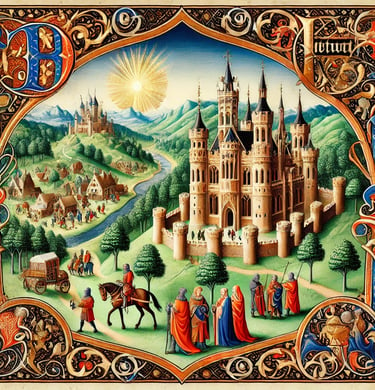

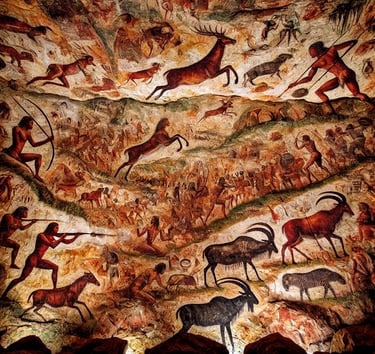

Rock to Digital
As ancient civilizations developed, painting evolved, becoming more sophisticated and diverse. In Ancient Egypt, murals adorned the tombs of the pharaohs, depicting scenes from everyday life and Egyptian mythology. In Ancient Greece, vase and panel painting celebrated beauty and harmony, reflecting the ideals of Greek philosophy.
Throughout history, painting has been a reflection of society, capturing its values, beliefs and concerns. Genre paintings, for example, depicted scenes from everyday life, revealing the customs and traditions of different eras. History paintings celebrated important events and illustrious figures, shaping the collective memory of a nation.
Painting has also been used as a tool for social and political criticism, denouncing injustice and inequality. The works of artists such as Goya and Picasso, for example, depicted the horrors of war and oppression, serving as a call for action and change.
In the modern era, painting continues to evolve, exploring new techniques and themes. Abstract art, for example, broke away from figurative representation, seeking to express emotions and concepts through form and color. Contemporary art, in turn, challenges conventions and questions the limits of art, reflecting the diversity and complexity of the modern world.
Painting remains a powerful and relevant form of expression, capable of connecting us with the past, inspiring us in the present and challenging us to imagine the future.
Mens Sana in Corpore Sano
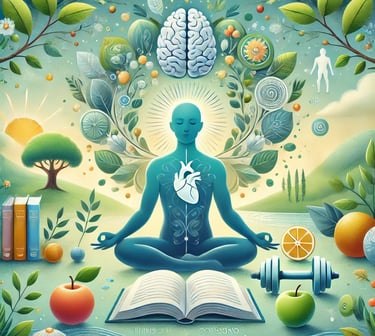

Light up your journey to well-being! Discover tips and practices to take care of your body and mind, and live a lighter life. Awaken your best self and live happier! Our blog guides you to a healthier and more balanced life, with tips on diet, exercise and emotional well-being.


Diabetes is a chronic condition that affects millions of people around the world. Characterized by high blood sugar levels, this disease requires special attention and care to ensure a healthy life and prevent complications. In this article, we will discuss the different types of diabetes, their symptoms, diagnosis, treatment, and tips for living well with this condition.
Glucose is our body’s main source of energy, which comes from the food we eat. Insulin, a hormone produced by the pancreas, is responsible for transporting glucose from the blood into the cells, where it is used to generate energy.
In diabetes, the body does not produce enough insulin or is unable to use it effectively. As a result, glucose builds up in the blood, causing hyperglycemia. In the long term, excess glucose can damage organs and tissues, leading to serious complications.
Types of Diabetes
There are two main types of diabetes:
Type 1 diabetes: This occurs when the immune system attacks the cells in the pancreas that produce insulin. It is an autoimmune disease that usually manifests itself in childhood or adolescence.
Type 2 diabetes: This is the most common type of diabetes, accounting for about 90% of cases. It occurs when the body develops resistance to insulin or when the pancreas does not produce enough insulin. It is most common in adults over 40, but has become increasingly common in young people and children due to sedentary lifestyles and obesity.
Symptoms
Symptoms of diabetes can vary from person to person, but some of the most common include:
Excessive thirst: Increased need to drink fluids.
Frequent urination: Needing to urinate more often, especially at night.
Excessive hunger: Feeling hungry even after eating.
Fatigue: Feeling fatigued and lacking energy.
Blurred vision: Difficulty seeing clearly.
Tingling: A tingling or numb sensation in the hands and feet.
Slow-healing wounds: Difficulty healing wounds and cuts.
Diagnosis
Diabetes is diagnosed through blood tests that measure glucose. The main tests are:
Fasting blood glucose: Measures blood glucose after an 8-hour fast.
Oral glucose tolerance test (OGTT): Measures blood glucose after ingesting a glucose solution.
Glycated hemoglobin (HbA1c): Measures the average blood glucose over the last 2 to 3 months.
Treatment
The treatment of diabetes aims to maintain blood glucose levels within normal levels, prevent complications and improve the patient's quality of life. The main forms of treatment include:
Healthy diet: A balanced diet, rich in fruits, vegetables, legumes and whole grains, low in sugar, saturated fats and refined carbohydrates.
Regular physical activity: Exercising helps control blood glucose and improves insulin sensitivity.
Medications: In many cases, it is necessary to use medications to control blood glucose, such as insulin or other oral antidiabetics.
Monitoring blood glucose: It is important to measure blood glucose regularly to adjust the dose of medications and diet.


Poorly controlled diabetes can lead to several serious complications, such as:
Cardiovascular diseases: Heart attack, stroke, angina, and other diseases of the heart and blood vessels.
Nephropathy: Kidney disease that can lead to kidney failure.
Retinopathy: Eye disease that can lead to blindness.
Neuropathy: Damage to the nerves that can cause pain, tingling, and loss of sensation.
Diabetic foot: Foot problems, such as wounds that do not heal, infections, and amputations.
Tips for living well with diabetes
Follow medical advice: See your doctor regularly and follow the prescribed treatment plan.
Maintain a healthy diet: Eat regular meals at set times and avoid processed and industrialized foods.
Practice regular physical activity: Move for at least 30 minutes a day, most days of the week.
Monitor your blood glucose: Measure your blood glucose regularly and write down the results.
Don't smoke: Smoking increases your risk of diabetes complications.
Keep your weight under control: Being overweight can make it harder to control your diabetes.
Take care of your feet: Examine your feet daily and see a podiatrist regularly.
Get support: Talk to other people with diabetes and join support groups.
Complications



Remember: Diabetes is a serious disease, but with proper treatment and a healthy lifestyle, it is possible to live well and prevent complications. See your doctor regularly and follow his or her advice.
Sociedade Brasileira de Diabetes: https://diabetes.org.br/
Ministério da Saúde: https://www.gov.br/saude/pt-br/assuntos/saude-de-a-a-z/d/diabetes
References
Diabetes: You are in control of your health. Learn how to prevent and control it!
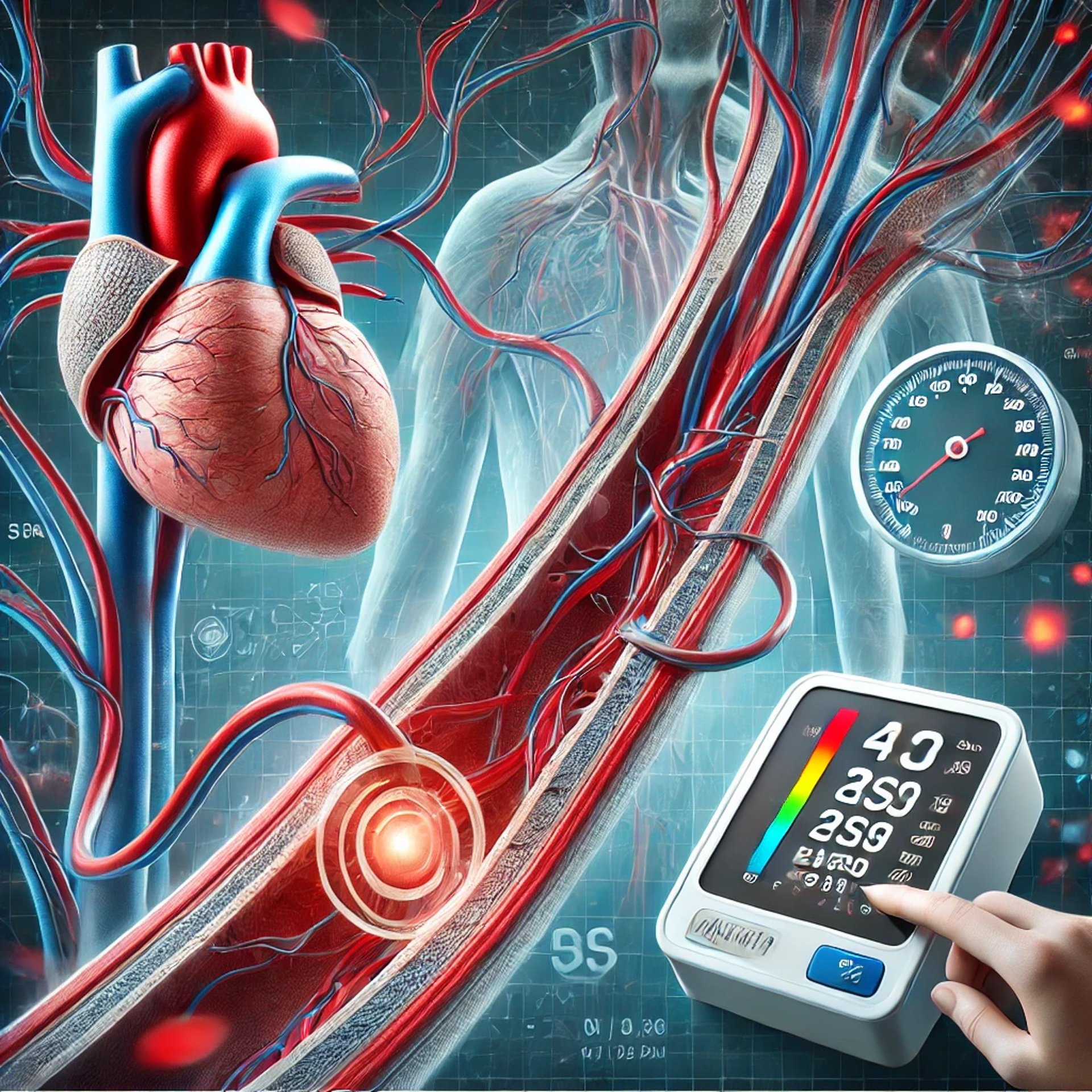
Hypertension: A Silent Killer


Did you know that your heart works tirelessly, pumping blood throughout your body? This force that it exerts on your arteries is called blood pressure. When this pressure is too high, we call it hypertension.
Imagine your heart as a water pump. When the pressure is too high, it is as if the pump is throwing water with great force against the walls of the pipe. Over time, these walls wear down and narrow, just like the arteries in our body.
Overworked heart: The heart has to work harder to pump blood, which can lead to problems such as heart failure.
Damage to the arteries: High blood pressure damages the walls of the arteries, making them stiffer and narrower.
Increased risk of blood clots: Damage to the arteries makes it easier for blood clots to form, which can block important vessels, such as the arteries of the heart (causing a heart attack) or the brain (causing a stroke).
Kidney problems: High blood pressure damages the blood vessels of the kidneys, impairing their function of filtering blood.
The consequences of high blood pressure
Maintain a healthy diet: Reduce your intake of salt, processed foods and saturated fats.
Practice physical activity regularly: Aerobic exercises such as walking, running and swimming help control blood pressure.
Maintain a healthy weight: Excess weight increases the risk of high blood pressure.
Don't smoke: Smoking increases blood pressure and the risk of heart disease.
Manage stress: Practice relaxation techniques such as yoga and meditation.
Use medication: If you have high blood pressure, strictly follow your doctor's instructions and take the prescribed medication.
Hypertension is a serious problem, but it can be controlled.






Remember: Hypertension often has no symptoms, so it is important to measure your blood pressure regularly.
According to the Ministry of Health, hypertension is one of the main risk factors for cardiovascular diseases, such as heart attack and stroke.
Don't let hypertension compromise your health. Take care of your heart!
For more information, consult the Ministry of Health:
https://www.gov.br/saude/pt-br/assuntos/saude-de-a-a-z/h/hipertensao

VISIT YOUR DOCTOR REGULARLY
Smoking is one of the main risk factors for developing cardiopulmonary diseases, significantly affecting both the heart and lungs. Cigarette smoke contains thousands of toxic substances, such as nicotine, carbon monoxide and tar, which cause progressive damage to the body.



Impact on the cardiovascular system:
Atherosclerosis: Smoking accelerates the process of fatty plaque formation in the arteries, narrowing blood vessels and hindering blood flow. This increases the risk of heart attack, stroke and other cardiovascular diseases.
Increased blood pressure: Nicotine stimulates the release of adrenaline, a hormone that raises blood pressure and heart rate, overloading the heart.
Thrombosis: Smoking increases blood clotting, favoring the formation of thrombi (clots) that can obstruct the arteries and cause heart attack or stroke.
Arrhythmias: Nicotine and other substances present in cigarettes can cause changes in heart rhythm, increasing the risk of serious arrhythmias.
Impact on the respiratory system:
Chronic Obstructive Pulmonary Disease (COPD): Smoking is the main cause of COPD, a progressive disease that makes breathing difficult due to the destruction of the lung alveoli and inflammation of the bronchi.
Lung cancer: Smoking is responsible for approximately 90% of lung cancer cases, one of the most lethal types of cancer.
Other respiratory diseases: Smoking increases the risk of pneumonia, bronchitis, emphysema and other respiratory diseases, in addition to worsening the symptoms of asthma and rhinitis.
Other harmful effects of smoking:
In addition to damaging the heart and lungs, smoking increases the risk of several other types of cancer, such as cancer of the mouth, larynx, esophagus, bladder and pancreas.
Smoking also harms oral health, causing bad breath, gingivitis, periodontitis and mouth cancer.
Smoking is associated with fertility problems, sexual impotence, osteoporosis, gastric ulcers and several other diseases.
Smoking cessation:
Quitting smoking is the best decision a smoker can make to protect their health. The benefits of smoking cessation are immediate and increase over time.
Even long-term smokers can benefit from smoking cessation, significantly reducing the risk of cardiopulmonary disease and other health problems.
There are several methods and resources available to help smokers quit smoking, such as medications, behavioral therapies and support groups.
References:
World Health Organization (WHO): https://www.who.int/health-topics/tobacco
Please note: The information provided here is not a substitute for professional medical advice. Consult a healthcare professional for personalized guidance on the risks of smoking and the best strategies to quit smoking.
Smoking is one of the main risk factors for developing cardiopulmonary diseases, significantly affecting both the heart and lungs. Cigarette smoke contains thousands of toxic substances, such as nicotine, carbon monoxide and tar, which cause progressive damage to the body.
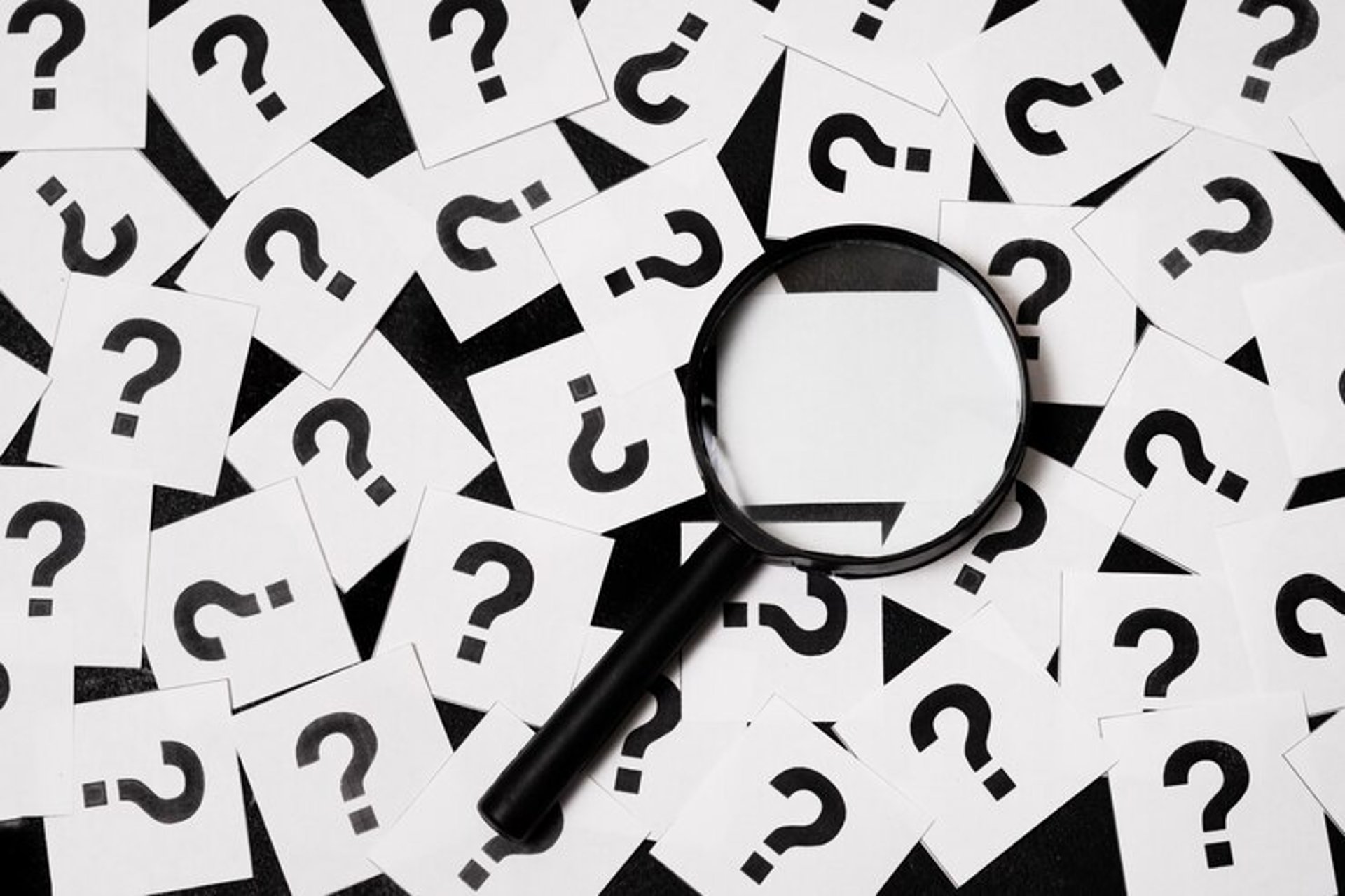
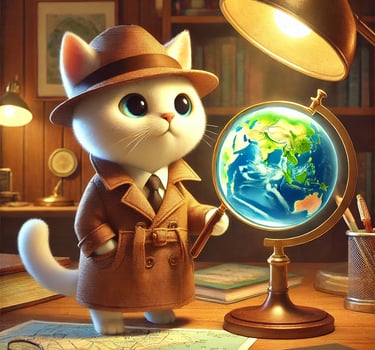

Oly Mystery

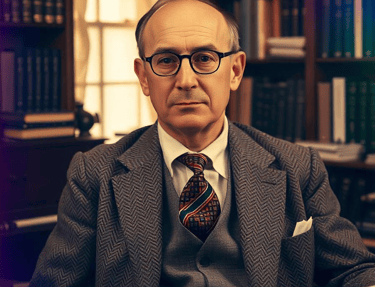
The Dark Forest
A Sinister Shadow in the Cosmos
In a dense forest, where darkness is absolute and danger lurks behind every tree. This is how some scientists describe the universe: a place full of advanced but extremely hostile and competitive civilizations. The Dark Forest Hypothesis suggests that intelligent life in the cosmos is rare and precious, and that civilizations tend to hide to avoid being discovered and eliminated by others.
The Eerie Silence of the Cosmos: The Fermi Paradox
Enrico Fermi, one of the greatest physicists of the 20th century, was known for his brilliant mind and his ability to simplify complex problems. In a casual conversation with colleagues over lunch, Fermi asked a question that would echo through the ages: “Where is everybody?”
This seemingly simple question sparked one of the greatest controversies in science: the Fermi Paradox.


The Dark Forest Hypothesis, popularized by the acclaimed science fiction book "The Three-Body Problem" by Chinese author Liu Cixin, and the Three-Body Problem itself share a fascinating intersection in the realm of scientific speculation and exploration of the unknown. The connection between the Dark Forest Hypothesis and the Three-Body Problem lies in the idea that the universe is a complex and unpredictable place where intelligent life may be subject to greater, uncontrollable forces.
Have you ever wondered why, despite the entire universe at our disposal, we have never found concrete evidence of extraterrestrial life? This question, known as the Fermi Paradox, has puzzled scientists and philosophers for decades. One of the most intriguing theories to explain this cosmic silence is the Dark Forest Hypothesis.
The implications of the Dark Forest
If the Dark Forest Hypothesis is correct, the implications are profound:
The Great Silence: The absence of signs of extraterrestrial life may not be a sign that we are alone in the universe, but rather that other civilizations are in hiding.
The need for caution: By sending signals into space, such as the Voyager probe’s messages, we risk attracting the attention of hostile civilizations.
The importance of preservation: The Dark Forest theory reminds us of the fragility of life and the importance of protecting our planet.
A grim but realistic scenario?




The Dark Forest Hypothesis is just one of many theories that attempt to explain the Fermi Paradox. It’s an intriguing scenario, but one that raises more questions than it answers. Is the universe really such a hostile place? Or are we just beginning to understand the complexity of life in the cosmos?

Singing I Send Sadness Away

Singing banishes your troubles: The science behind the melody
Have you ever felt that irresistible urge to sing in the shower or in the car? That moment when music seems to transport you to another place? No wonder! Science has proven that singing does much more than just entertain; it is a true elixir for the soul.
Why is singing so good?
When we give voice to a song, our brain releases an explosion of feel-good neurotransmitters. Endorphins, for example, act as a natural antidepressant, combating stress and anxiety. It is as if music were a warm hug for the soul, calming and comforting us.
A musical universe awaits you! Discover new rhythms and let the music take you away. Let your voice be heard!

Life Imitates Art & Vice Versa

Art and Life, Eternal Embrace
Have you ever stopped to consider that art is like a mirror to the human soul? Every brushstroke, every musical note, every written word is a reflection of our deepest joys, sorrows, fears, and desires. From the earliest cave paintings to the most contemporary digital art, humans have sought to express themselves and connect with others through art. It's a language that transcends words, a way of sharing our experiences and understanding the world around us.
Art doesn't just imitate life; it transforms it. When we engage with a piece of art, we're transported to other worlds, experiencing emotions we didn't know we had. It's like peering into a window of the soul, allowing us to glimpse the beauty and complexity of the human experience. Art is both a reflection of our world and a force that shapes it.
What about you? Have you ever felt touched by a work of art? Have you ever felt that a film, a song, a painting or a piece of literature spoke directly to you?
Art connects us, inspires us and makes us grow as human beings. When we appreciate a work of art, we are celebrating life in all its nuances.
How about venturing into this infinite universe of the Seventh Art and discovering new ways of connecting with yourself and the world?





Art and life are intertwined in an eternal dance. Art is born from life, and life is enriched by art. It's a cycle of creation and inspiration, where artists draw from their experiences to create works that, in turn, shape the way we perceive the world.

Become
Imagine being the friend everyone turns to when they need an answer, advice, or a new perspective. Being recognized as an informed and open-minded person is about much more than just accumulating knowledge. It’s about inspiring, connecting, and transforming the lives of those around you.


The World under Construction
To enrich and foster respectful, relevant and thought-provoking discussions. To promote a constructive and tolerant space where different perspectives meet and new ideas are generated. Come and be part of this enriching exchange of knowledge.



Sharing what we know is like lighting a fire: it warms us and lights the way for others. By sharing your knowledge, you not only help build a more informed community, but you also deepen your own understanding of the world. Be the spark that inspires others to seek knowledge!


Autor
HUMANAUTAS
Science, Technology, Curiosities and Behavior.
Contact
humanautaspontocom@gmail.com
© 2024. All rights reserved.

